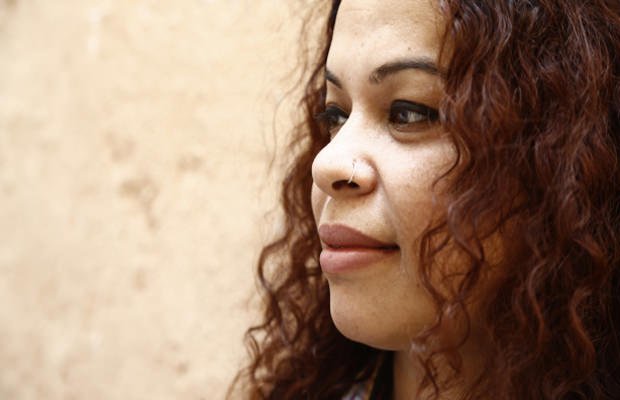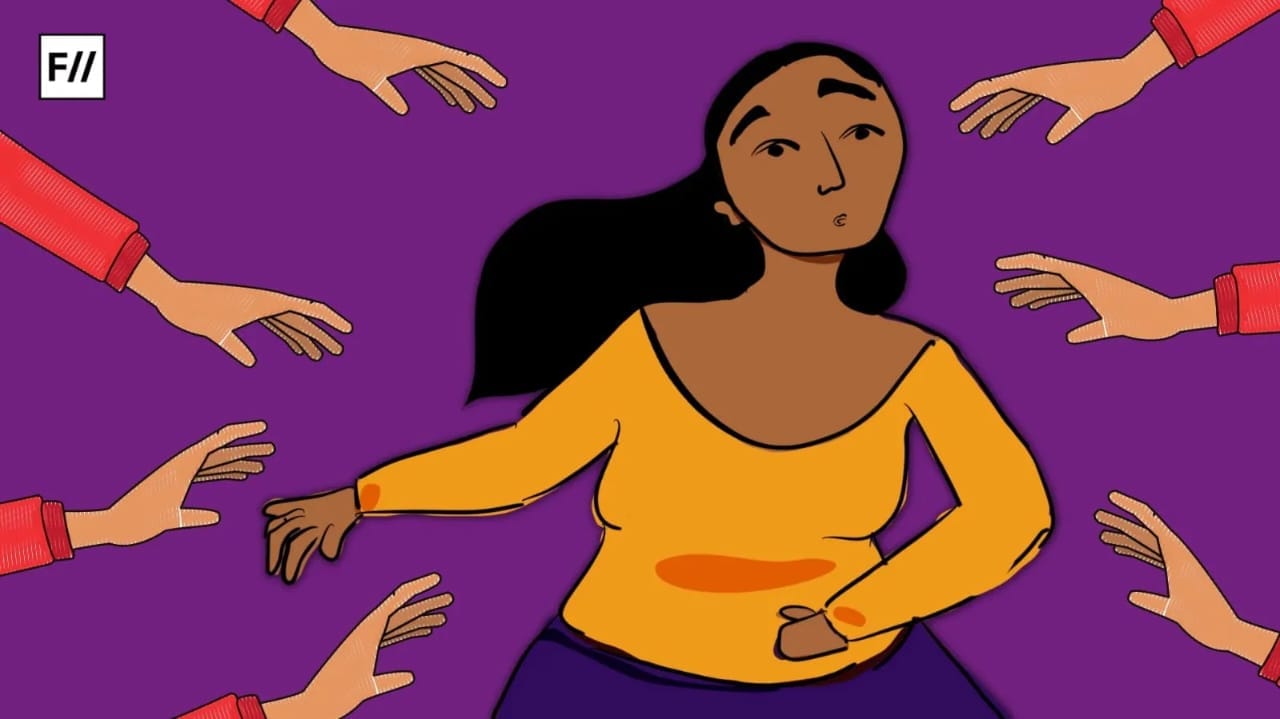This article is part of the #GBVInMedia campaign for the 16 Days Of Activism global campaign to end gender-based violence. #GBVInMedia campaign analysis how different kind of mainstream media (mis)represents/reports gender-based violence and broadens the conversation from violence against women to violence against people from the queer community, caste-based violence and violence against people with disabilities. Join the campaign here.
India is a diverse country, a democratic country, a “tolerant” country. India however, is not a safe country, a woman friendly country or a sensitive country. Why use physical torture when you can get away with mental torture? Indians are very conscious of rape, they know exactly how it takes place and who is to blame. Often the blame is placed upon the victim, but they asked for it. So, why not? Why not blame the victim when it is easy to do? Why not ask what the woman was doing alone out at night when she should have been hiding at home, saving herself, protecting herself. The glaring example of India’s blame game is one Suzette Jordan, the ‘Park Street rape victim’ till the day she died.
Suzette Jordan, single mother of two teenage daughters, had the audacity to be out dancing at a club at night. She was naïve enough to accept a ride back home. She was gang-raped at gunpoint by five men and then thrown out on the road on 5th February, 2012. Suzette went home battered and bruised. A few days later she found the courage to report it to the police. The very wise policemen laughed at her at the station and refused to believe her. She underwent a humiliating test at the doctor’s and was told it was good that she was “fair” because the bruises were visible. The night that Suzette was left to die on the road, the image was entirely different. Her face was bloodied and blue, her neck bore the marks of the nails that tried to strangle the life out of her, clumps of hair were falling out. “my daughters live with the trauma of having seen me that way“, she said in an interview.
The media picked up the story and since then, Suzette was the ‘Park Street Rape victim’. She was interviewed by all of the major news channels where her silhouette made it to the TV screen to protect her identity. Still, people around her knew who she was. The media asked her why she was at the club, what happened to her, if she knew her assailants and they stuck to the story 24×7. If it wasn’t a big deal before that, the media made sure that it was a state level issue. Mamata Bannerjee, the ‘esteemed’ Chief Minister of West Bengal promptly announced that it was all a shajano ghotona, a made up story to defame her government. Madan Mitra, West Bengal Sports Minister said, “she has two children, and so far as I know, she is separated from her husband. What was she doing at a nightclub so late at night?” Other ministers said that it was a case of prostitution gone wrong. All this and more were reported day and night by news channels till the Park Street Rape victim was a household term.
Suzette’s name was kept out of the media, her face was blurred in interviews but people knew she was a single mother of two teenage daughters, that she was Anglo-Indian, that she had been raped at gunpoint and that she had been to a club to have fun. She could not get jobs after and was humiliated anywhere she went. She was asked if she was the Park Street rape victim anywhere she went. The term stuck to her like a leech. She had said later in an interview,
My father warned me of the consequences of reporting a rape…that the police were going to make a fool of me. He warned me of all the humiliation that would come.The thought that made me want to go (to the police) was that they were going to get away with this. And do this to how many more?
Eventually three of the five accused were apprehended and two are still on the run. The fast track court was no help. The female judge was unsympathetic, the defence attorney glib and mocking. Finally when her underwear was paraded at the court, Suzette broke down. The judge allowed the act. The media reported that part too. Every bit of the life of the Park Street Rape victim was reported.
In 2013, when a twenty-year old succumbed to her injuries and gang rape in Kamduni Village near Barasat, West Bengal, Suzette came out of the shadows and acknowledged herself as the park street rape survivor people knew all too well. She rallied with her peers for justice. She tried to be brave where bravery was new. She said,
I was sick of being called ‘Park Street’. I realized that I can’t fight this behind a mask. I had to make the point that we have nothing to be ashamed of. Society should be ashamed to make rape victims feel a stigma. Me? The ‘Park Street Rape Victim’? Bullshit! I‘m a mother, I’m a daughter, I’m a sister. People depend on me and love me!
Suzette fought, despite the media, despite the citizens of Kolkata and despite a culture of victim blaming.
In 2014, the restaurant Ginger in Kolkata refused her entry because she was a ‘rape victim’. The management refused to apologise for it and blamed it on her misconduct. The media ran with the story and social media was outraged. A lot of people gave the restaurant one star rating on Zomato and wrote lengthy testimonials against the restaurant on the website. They wanted to make sure that no one else eats at a restaurant that discriminated against a rape survivor. The Park Street rape victim regained headlines. It wasn’t Suzette but the rape victim who was reported.
Suzette Jordan, a mother, a survivor, an activist died this year of meningitis. It is difficult to believe that death brought her the proper attention she deserved in life. The media ran with stories of her glory after her death. They chronicled her life and she trended on Twitter for the right reasons this time. Her death made her a martyr. Harrish Iyer, a fellow activist and a close personal friend of Suzette’s said that India and its people killed Suzette and not her disease. He spoke of the constant agony that was her life. She depended on antidepressants and sleeping pills to have a good night’s sleep and she would still wake up with nightmares. She did not get the justice she deserved, instead she got a whole lot of blame for her actions. Our media had done nothing to alleviate her pains, or any other survivor’s.
India is not a confrontational country. A brave survivor like Suzette ruffles feathers, it makes people uncomfortable. We expect rape survivors to be hidden, to be ashamed of what happened to them. Indians justify rape. They try to see why the rape happened instead of confronting the issue of India becoming a country direly unsafe for women. Same goes for Indian media; they represent rape survivors as victims, as abla naris or in some cases trying to find out the truth, they decimate any dignity left in the survivor. Even after the accused were arrested, the rape was still “alleged”. After Suzette’s death however, she became a brave young soldier carrying a torch for the rest of the survivors and feminists. The discourse is worrying. Taking away every inch of personal space from a survivor and then putting them up on a pedestal when they are dead, is worrying.
After Aruna Shaunbaug died, 42 years after she was left in a coma after being raped at the hospital she would later die in, the media took up the story and ran with it. They projected her agony and condemned the heinous act. Again, she was made a martyr after her death, when it was easy to do so. Why do we not take the living seriously? Do we only respond to the seriousness of death? What if Jyoti Singh Pandey, the Nirbhaya rape victim had survived? Would Indians have been equally sympathetic? Would the media have been equally sympathetic? What would her life have been? Would she have lived as a rape victim all her life?
Indian media finds it easier to deal with rape if the victim is not there to confront them. Death makes it easier to deal with the crime. Murder, they understand, a violation of one’s body through forcible sexual crime is a little harder to grasp because it shatters the idea of the cultured society we live in. Although even in death, all the world would remember about Suzette, Aruna, Jyoti, Shakti Mills and numerous others is that they were rape victims. The discourse needs to change. Indian media needs to recognise rape survivors as individuals who have the strength to move on and not make their whole life about their rape. The media needs to enable the survivors to grow, to stand on their own feet, and not topple them when they stand. Media by nature is an influencing medium. If used for good, the news channels and other sources of information can be a booster, a supporter of rehabilitation instead of dredging past horrors every time a news item “demands” it.
Featured Image Credit: Deccan Chronicle
About the author(s)
Intersectional feminist. Atheist. Author. Poet. Fiction Junkie. Loves pissing off discriminatory people. Always up for a good book and black coffee.




